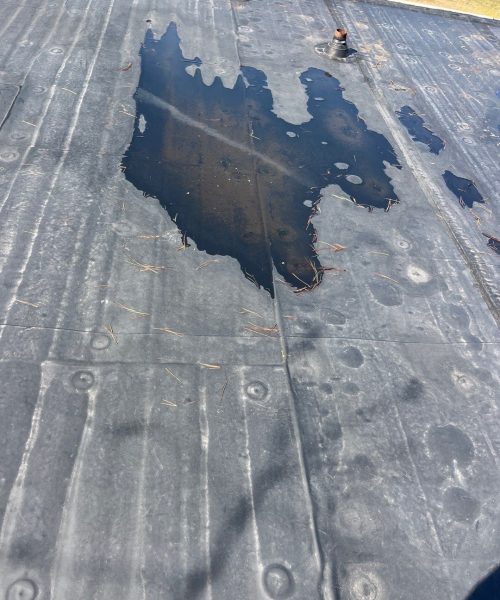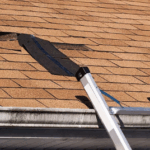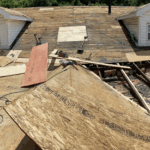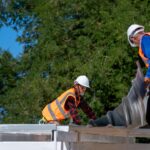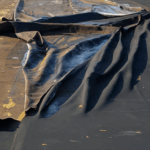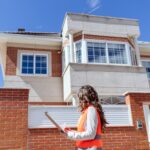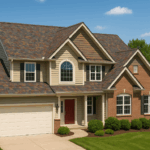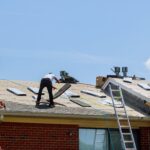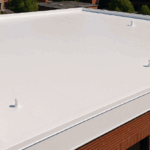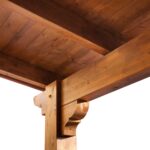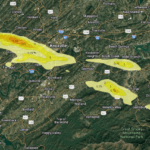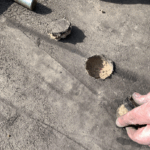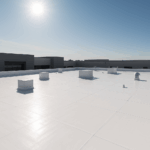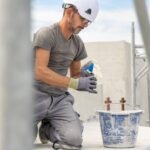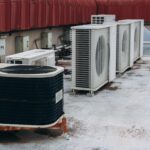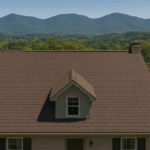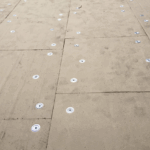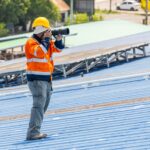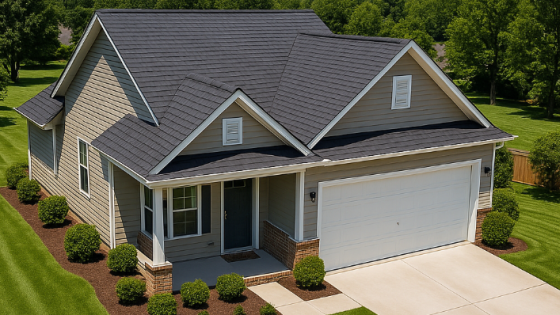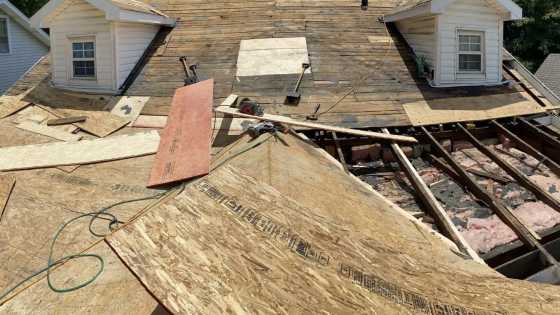Flat commercial roofs offer durability, cost-effectiveness, and modern design appeal—but they come with a major downside: ponding water. If left unchecked, ponding on flat commercial roofs can lead to serious structural and financial damage.
Whether you’re a commercial property owner, facility manager, or real estate investor, understanding how to identify and prevent ponding can save you thousands of dollars in repairs and extend the lifespan of your roof.
At Litespeed Construction, Knoxville’s trusted roofing experts, we’ve repaired and restored hundreds of commercial flat roofs across Tennessee. In this guide, we’ll break down what causes ponding, how to prevent it, and the best drainage and roofing solutions that truly work.
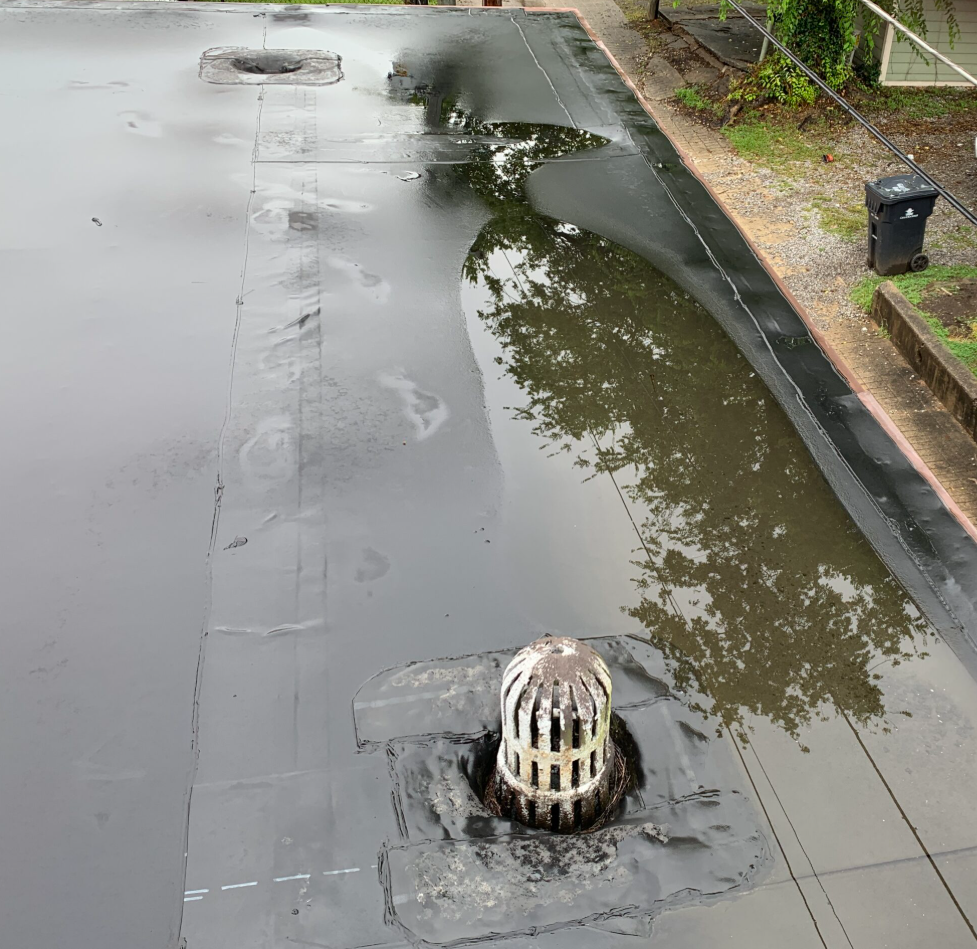
Key Takeaways
💡Ponding water that remains on flat commercial roofs can lead to serious structural damage
💡Proper roof slope, drainage system, and routine inspections are critical for preventing ponding.
💡High-performance roofing materials like PVC and TPO are better suited to resist ponding
💡Professional solutions like tapered insulation, crickets, and new drain installations can correct existing ponding problems
What Is Ponding on Flat Commercial Roofs?
Ponding refers to the accumulation of water on a flat or low-sloped roof that does not drain within 48 hours after precipitation. According to ASTM D1079, ponding is defined as “water remaining on a roof surface longer than 48 hours under conditions conducive to drying.”
Common Causes of Ponding:
| Cause | Description |
|---|---|
| Insufficient Drainage | Blocked or undersized drains and gutters fail to remove water effectively. |
| Roof Settlement | Aging or improperly constructed roofs can sag, creating dips. |
| Poor Design Slope | Roofs with less than a ¼-inch per foot slope often experience water buildup. |
| Debris Accumulation | Leaves, dirt, and roofing material can block pathways for water drainage. |
| Roof Membrane Degradation | Blistering or cracks allow water to collect and worsen over time. |
The Risks of Ponding Water on Flat Commercial Roofs
The National Roofing Contractors Association (NRCA) warns that prolonged ponding can reduce a roof’s life expectancy by 50%.
Real-World Impact:
| Risk Factor | Potential Consequence |
|---|---|
| Structural Load | Water weighs over 5 lbs/gallon—persistent ponding adds thousands of pounds. |
| Membrane Deterioration | UV exposure and trapped water accelerate roof failure. |
| Mold and Mildew | Standing water promotes biological growth, causing interior air quality issues. |
| Warranty Voids | Most roofing manufacturers void warranties due to evidence of ponding. |
| Insulation Damage | Water seeping under the membrane compromises thermal efficiency. |
Government Data Insight:
According to the U.S. Army Corps of Engineers, structural roof failures in commercial buildings often link directly to long-term ponding and snow accumulation. (Source)
Preventing Ponding on Flat Commercial Roofs: Best Practices
1. Ensure Proper Roof Slope
Industry standards recommend a minimum slope of 1/4 inch per foot (2%) for flat commercial roofs to facilitate drainage.
Litespeed Pro Tip:
If the roof’s design doesn’t meet this, we can retrofit slopes using tapered insulation boards or apply lightweight concrete slope corrections.
2. Install and Maintain Adequate Drainage Systems
There are several commercial drainage systems:
| Drainage Type | Description |
|---|---|
| Interior Drains | Located at low points and connected to internal piping. Ideal for large flat roofs. |
| Scuppers | Openings at the edge of the roof directing water off the side. Simple and effective. |
| Gutters & Downspouts | Common for smaller roofs, especially with parapet walls. |
Maintenance Is Key:
The EPA recommends quarterly roof inspections to keep drains and gutters free from debris. (Source)
3. Regular Roof Inspections and Maintenance
Perform semi-annual inspections—especially in spring and fall—and immediately after storms. Litespeed Construction offers commercial inspection packages that include:
- Thermal imaging to detect insulation damage
- Drainage system performance checks
- Membrane condition assessments
4. Use High-Performance Roofing Materials
Some materials handle ponding better than others:
| Material | Ponding Resistance |
|---|---|
| EPDM Rubber | Fair - May degrade without reinforcement |
| TPO | Good - Heat-welded seams improve longevity |
| PVC | Excellent - Resists chemical and water breakdown |
| Modified Bitumen | Good - Needs granular surfacing to combat UV |
For heavy ponding areas, Litespeed recommends PVC or TPO with reinforced seams.
Retrofit Solutions to Stop Ponding
If you already have ponding issues, all is not lost. Here’s what can be done:
- Tapered Insulation Additions: Adjust slope during reroofing or overlays.
- Cricket Installations: Triangular ridge structures that divert water away from HVAC units or drain valleys.
- Coatings: Silicone or acrylic coatings protect membranes in ponding zones.
- Adding New Drains: Improve flow from the roof’s low spots to scuppers or internal piping.
Pros and Cons of Flat Roof Ponding Solutions
| Solution | Pros | Cons |
|---|---|---|
| Tapered Insulation | Long-term fix; improves R-value | Higher upfront cost |
| Crickets | Targeted water redirection | Needs expert installation |
| Roof Coatings | Quick, affordable protection | May need reapplication every 5–10 years |
| New Drains/Scuppers | Directly solves drainage issues | May require structural changes |
Web Ratings – Roofing Ponding Solutions
| Source | Rating (out of 5) | Notes |
|---|---|---|
| NRCA | ⭐⭐⭐⭐⭐ | Strongly recommends ¼" per foot slope |
| GAF Roofing | ⭐⭐⭐⭐☆ | Emphasizes importance of drainage for warranty coverage |
| EPA | ⭐⭐⭐⭐☆ | Recommends green roof design considerations |
| HomeAdvisor | ⭐⭐⭐⭐☆ | Notes average flat roof repair costs at $300–$800 |
FAQs About Ponding on Flat Commercial Roofs
More than 48 hours is considered ponding and can cause damage.
Yes, most manufacturers consider ponding as neglect unless specifically designed for standing water.
At least twice a year and after major storms.
Not always—especially if caused by neglect or poor maintenance.
Yes, due to roof deck sagging, aged materials, and outdated drainage.
PVC is highly resistant and suitable for areas with frequent pooling.
Anywhere from $500 for minor fixes to $10,000+ for full slope retrofits.
No, but they are a useful protective layer that can buy time.
A raised structure that diverts water around obstructions or to drains.
Not recommended—commercial roofs require expert design and installation.
Why Choose Litespeed Construction for Flat Roof Repairs?
Located in Knoxville, TN, Litespeed Construction is a trusted leader in commercial flat roofing across the Southeast. With over a decade of experience, certified installers, and hundreds of happy commercial clients, we:
- Diagnose drainage issues with precision
- Offer same-day emergency repairs
- Provide honest assessments and free roof inspections
- Use only premium-grade materials from GAF, Mule-Hide, and Carlisle
